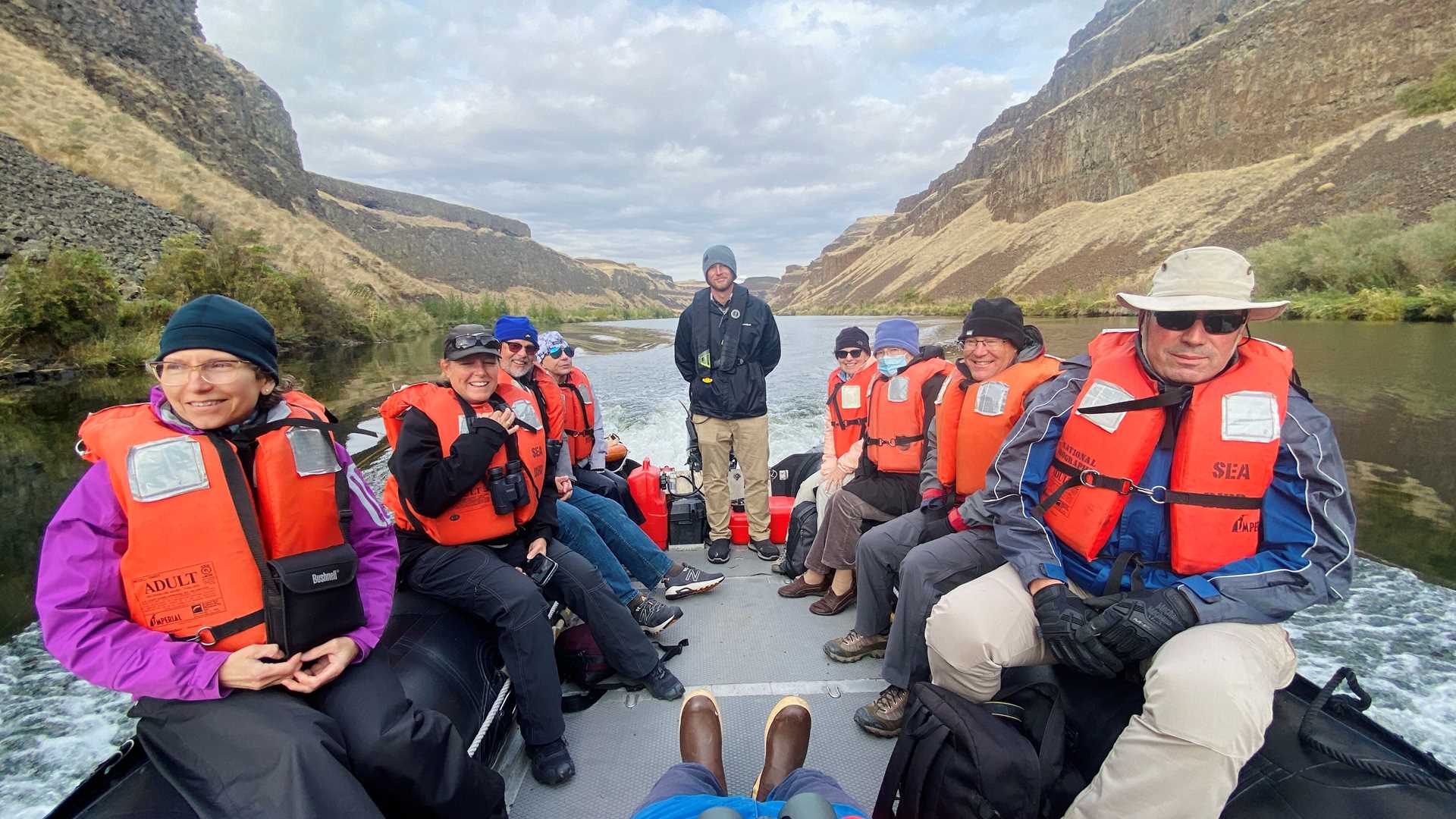A foggy morning greeted National Geographic Sea Bird as it sat along the Lyons Ferry State Park at the confluence of the Palouse River. After breakfast, guests departed for the shore to transfer to a shuttle to Palouse Falls State Park. The remaining guests departed for a Zodiac tour of the river and canyonlands below Palouse Falls. To access the river system, skilled drivers were required to navigate through a series of shallow areas created by the deposition of loess from the Missoula floods. Before entering the tributary, Zodiacs passed by the site of a major archeological discovery within North America. The excavation of Marmes Rockshelter revealed evidence of human occupation from as many as 11,230 years ago, including evidence of extensive trading and a cremation hearth, a common burial practice for Stone Age peoples. As Zodiacs quietly moved up the river system, several animals were discovered throughout the riparian zone, including golden eagles, porcupines, waterfowls, woodpeckers, pheasants, and even mule deer. After lunch, groups switched locations to give everyone a chance to explore the surrounding area. When guests arrived back at the ship, National Geographic Sea Bird pulled anchor and departed for the Clarkston location with only three bridges and two dams left along the journey.
4/24/2025
Read
National Geographic Sea Bird
Hood River
Unseasonably warm and dry weather continued to grace us as we proceeded with our expedition down the Columbia River. The morning was crisp as we disembarked in Hood River, Oregon, but quickly warmed up as we boarded our coaches. Our explorations began at Multnomah Falls, the number one tourist attraction in the state of Oregon. After we experienced this astounding cascade, some of our guests proceeded to Beacon Rock for a scenic climb up this 800-foot tall, aged lava plug. Others went to the Bonneville Fish Hatchery where we visited a local icon, Herman the sturgeon. Then both groups of explorers met at the Columbia Gorge Interpretative Center for Syncline wines and an overflowing helping of intriguing local history. As the superb weather continued, we voyaged back to National Geographic Sea Bird for a lovely afternoon of classic cruising down the Columbia River. Guests enjoyed the sun on deck or an engaging presentation on how climate change is affecting migratory birds. Complimentary water-level views of Multnomah Falls followed, and our last transit through a lock of this trip – a lovely passage through the Bonneville Lock and Dam. Photos by Doug Crispin and Alex Rubenstein







